:format(jpeg)/cloudfront-us-east-1.images.arcpublishing.com/tgam/ONIH5GIGH5GZRHOOJAYI7MQAAQ.jpg)
Our fourth annual benchmark of gender diversity in corporate Canada celebrates 90 companies with an average of 46% women in executive roles. That’s progress. But only 6.6% of Canada’s largest publicly traded companies have a woman at the top (up one measly percentage point from 2020), and at the rate we’re going, we won’t reach top-level parity for another four decades. To put it bluntly, we’re not moving nearly fast enough. Here’s how to fix it.
Women Lead Here: Corporate Canada female leadership ranked
Editor’s Note: We’re not moving fast enough on women in leadership
Whatever happened to busting the glass ceiling?
Jennifer Wong got a job as a style adviser at an Aritzia store in Vancouver in 1987. She was keen, green and tenacious—having ricocheted, resumé in tow, to the then-young chain’s Robson St. outpost immediately after being turned down for a gig at its location at the Oakridge Centre mall—and she quickly found in the company her professional home.
Within three years, she was managing at the store level; a year after that, she moved to corporate, where she gradually accumulated new responsibilities and seniority. Her 20th Aritzia-versary marked her C-suite debut as chief operating officer; in 2015, she added “president” to her title. Last year, when founding CEO Brian Hill stepped down, Wong took over the top job.
Aritzia CEO Jennifer Wong at the company's head office in Vancouver, in May 2022.Jimmy Jeong/The Globe and Mail
Today, she oversees a profitable and growing retail empire, with more than 100 stores, upwards of 6,500 employees and annual revenue of roughly $1.5 billion, from an office at Aritzia headquarters in Vancouver’s Downtown Eastside—a few kilometres, and several pay grades, away from where her career began.
This kind of soaring professional arc doesn’t happen by accident. Artizia now has more women in its leadership ranks, per capita, than any other large public company in Canada, a position made possible by a proclivity for promoting from within (many of its hundreds of long-tenured leaders started working in stores, as Wong did), a culture of mentorship (its Glassdoor reviews index is unusually high in stories of helpful managers) and—perhaps more than anything—intention.
“Brian and I have always aligned in our belief in supporting women in leadership, as well as championing equal opportunity,” Wong says. It is deliberate work to cascade that ethos into practice, but the results are decisive: With 73% of senior leaders being women, Aritzia can claim both progress and parity.
In that, it is an outlier.
Report on Business magazine’s 2023 Women Lead Here report is meant to offer a snapshot of executive gender diversity in corporate Canada. For the fourth year, researchers evaluated the top three tiers of leadership of the largest publicly traded companies, measuring and verifying the gender breakdown of each—a review of more than 5,400 executives at 514 companies with at least $50 million in revenue.

Looking closely at this data set, there are some glimmers of progress: For instance, 22% of executives identify as women, up from 18% pre-pandemic (but, it should be noted, down from 24% last year). More companies are adding women than are sitting on the status quo—or worse, losing them. Moreover, organizations that are boosting gender diversity are outperforming those that aren’t.
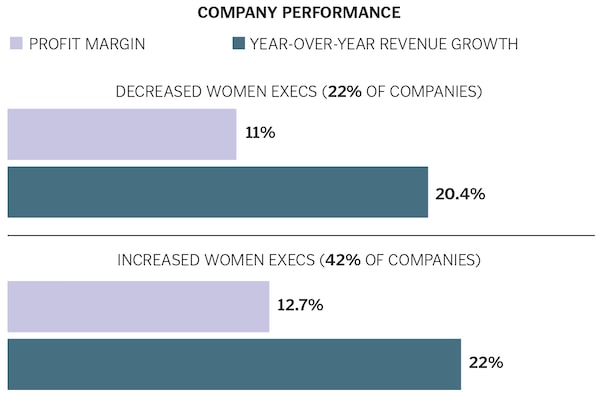
The Globe and Mail
Many firms are doing a lot of good, hard work to create workplaces that encourage and support gender-diverse leadership; 90 (including Aritzia) are doing well enough to earn this year’s Women Lead Here award.
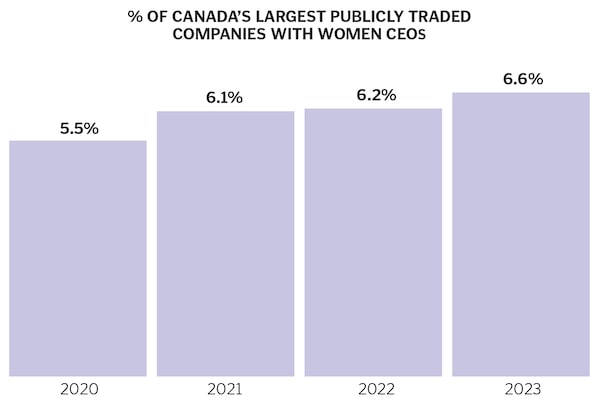
The Globe and Mail
But on aggregate, nearly every indicator of headway is minor, slow and, in the grand scheme of things, hard to cheer about. Take, for example, the share of companies with women CEOs—as visible a marker of equity as you can get. Yes, it’s growing—from 5.5% in 2020 to 6.6% this year. (For context, on this metric, Canada’s companies fall smack in the middle of global comparables: higher than the 4% of the United Kingdom’s FTSE 350 companies that are run by women, lower than the S&P 500, where the figure topped 10% for the first time this year.) But let’s not bask in the comfort of relative adequacy: These are still absurdly small numbers. At this pace, there won’t be parity in Canadian corner offices until 2066.
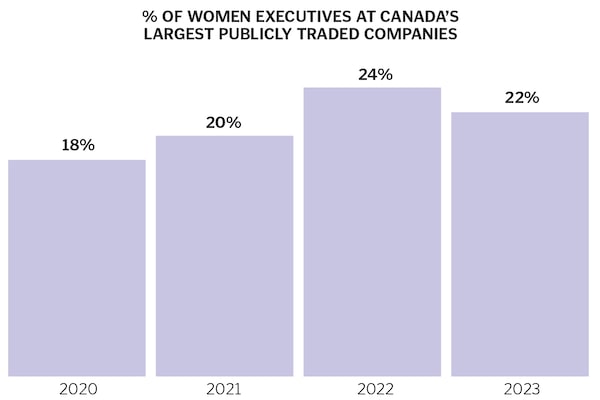
The Globe and Mail
Looking at the broader ranks of senior leadership, less than 9% of evaluated enof gender parity. Astoundingly, more than one-fifth—21.6%, to be exact—have not a single woman in the top three tiers of their org charts. That’s 111 big, publicly accountable businesses that are, very literally, boys’ clubs.
This, despite the federal government’s stated (and restated) commitment to advancing the economic prospects of women. This, despite years of “comply or explain”—a requirement, under the Canada Business Corporations Act, that public companies disclose policies and practices related to board and executive diversity. This, despite countless platitudinous talking points on countless careers pages and conference stages.
“Not only has progress been very slow, but whatever progress there has been has primarily benefited white women,” says Sarah Kaplan, a distinguished professor at the University of Toronto’s Rotman School of Management and director of the school’s Institute for Gender and the Economy. “You’ve got to do the work if you want to get better outcomes.”
If corporations are serious about achieving gender-diverse leadership, they need to jolt the system with deliberate and meaningful changes—enact a bit of equity stimulus, if you will. How?
Here are four ways to start.
Record everything
The unlikely star of last year’s International Women’s Day was a bot. On March 8, 2022, a U.K.-based Twitter account using the @PayGapApp handle went viral by reposting corporations’ self-congratulatory odes to gender equity with often-damning data about each organization’s compensation inequities.
Aside from ruining the days of a lot of blindsided PR teams, the gambit—orchestrated by freelance copywriter and social media manager Francesca Lawson and software consultant Ali Fensome—laid bare how many companies hadn’t done the work of examining their own performance, and/or didn’t think anyone would call their bluff, and/or didn’t care.
The incident spoke to the power of quantification, which remains a bugbear in many boardrooms. Some organizations hesitate to take stock of who’s being hired, promoted, compensated fairly and leaving, using logistical complexity—or, often, fear of what they’ll see—to justify inaction.
Others bristle at the idea of setting targets, which can, in the assessment of gender-balance expert Avivah Wittenberg-Cox, “offend everyone’s sense of fairness” and—more to the point—introduce the possibility of coming up short.
Yet, there isn’t a business on Bay Street that doesn’t run on metrics and goals; under the doctrine that what’s measured gets managed, corporations track everything from customer engagement to financial risk to employee productivity. Gender equity should be no different, says Caroline Codsi, founder and chief equity officer of Women in Governance, a non-profit that helps women advance into leadership roles and operates a benchmarking program for companies seeking gender parity. “I’m not into pledges and hashtags and smoke and mirrors; I want concrete action,” Codsi says. “How do you plan to have an impact on a gap you’ve never measured? That you don’t know the magnitude of? If you don’t know where your pain points are? Data is key to better understand where they stand and where they want to go.”
Rework work
In the ongoing debate about the future of post-pandemic work, one variable is becoming clear: Women want, or need, flexibility. According to McKinsey & Co. and LeanIn.org’s 2022 Women in the Workplace study, the overwhelming majority of surveyed women—nearly 90%—preferred remote or hybrid work arrangements, compared to 77% of men; higher in the org chart, nearly half of women leaders cited flexibility as a top consideration in deciding to stay at an organization.
“For the first time in my career, we’re seeing people leaving and going to companies with a more generous work-from-home policy,” wrote one vice-president responding to the survey. “So I dug into the data, and I realized something about every single person leaving. They were all women.”
At the risk of stating the obvious, most—not all, but most—child- and elder-care responsibilities still fall to women, regardless of pay grade. “We have to be able to recognize that and how that impacts women’s participation in the work environment,” says Paulette Senior, president and CEO of the Canadian Women’s Foundation.
COVID-19 dramatically accelerated these domestic demands. It also proved that most white-collar or knowledge-economy professionals don’t require nine-to-five (or eight-to-six) schedules to excel in their jobs; moreover, eliminating the time-sucks of commuting and business-attire grooming gave many overextended working women some much-needed breathing room to attend to their litany of personal responsibilities—a bit of slack they’re loath to give up. As a result, businesses enforcing firm back-to-the-office mandates will struggle to advance gender equity.
“Policies get in the way and push people out,” Senior says. “I think any leader worth their salt, no matter what industry, should be considering what flexibility looks like within their environment, in a way that is important for the folks that they want to attract and keep. It is a clear and present challenge. Leaders have to wrestle with it and be intentional about doing so.”
Reinforce with actions
When Frances McDormand and Dede Gardner approached Sarah Polley to write and direct the recent film adaptation of Miriam Toews’ novel Women Talking, Polley was apprehensive. She’d made films before, and she couldn’t see how the gruelling hours of standard set life would work with her life as a parent of three kids. But after talking it out, the trio came to a realization: If they were trying to make a movie about women, starring women, as women, perhaps they should do so in a women-friendly way.
Women Talking was made with shorter shoot days and breaks to allow cast and crew to attend to caregiving responsibilities, with no deleterious effects on profitability or quality (the film was nominated for two 2023 Academy Awards, including Best Picture). The lesson here: Ideology doesn’t count for much if it’s not backed up with behaviour.
Applied to a non-film-set workplace, any organization that purports to support women must be willing to make changes to both policy and actions. Hybrid and flexible work presents the clearest challenge to this orthodoxy: Human brains love recency and familiarity, and early evidence suggests many leaders disproportionately favour those whose loafers log the most mileage on the office carpet.
“Affinity bias creep is very real when somebody’s in the office consistently and somebody else isn’t,” says Lara Zink, president and CEO of Women in Capital Markets. “If you are going to offer leaders remote work, you need to normalize it. You need to communicate that working remotely or on a hybrid schedule is not going to incur any kind of stigma or penalties. And you should not only be modelling the behaviour; you should be encouraging colleagues—especially male colleagues—to do it, too.”
It’s not easy. But in a tight labour market, with intense competition for skilled workers—especially leaders with experience—companies that dawdle in embracing women-friendly policies will feel it, and hard. “Women aren’t leaving their jobs tomorrow. They’re leaving them now,” Zink says. “So employers can’t afford to delay.”
Reframe the opportunity
As diversity, equity and inclusion has become a buzzword, it has also, to many, become a bit of buzzkill—yet another thing to account for to increasingly scrutinous shareholders. Because the levers that drive change on this front can be complicated and time-consuming, and because progress isn’t immediately obvious, a certain fatigue can take hold, even among otherwise well-intentioned allies. “I think many people want diversity to be something that you do, and then you’re done,” says Rotman’s Sarah Kaplan. “And my message is: No, you literally have to be thinking about it every single day.”
This shouldn’t be a bad thing. Not only does thinking of gender equity as a chore yield hollow results—from token hires to leaky talent pipelines to weak support structures—doing so obscures the greater potential. As Kaplan explains, the policies that drive diverse teams tend to also accelerate creativity and productivity, such as, for example, measuring people on what they produce instead of how many hours they spend hunched over a laptop. “Imagine what could happen if we treated diversity with the mindset of an innovation challenge, as opposed to, Oh my god, one more drag,” she says. When organizations embrace the mental shift of seeing equity as a thing they get to do—not a thing they have to do—it creates, in Kaplan’s view, “a huge opportunity.”
Of course, this framing doesn’t insulate Aritzia, nor the 89 other 2023 Women Lead Here honourees, from the vagaries of capitalism. Gender-diverse leadership on its own won’t balance books or bolster market share or smooth out the bumpier bits of doing business. (Indeed, some companies on this year’s list have announced layoffs since research wrapped; others have seen high-profile women depart.) Gender equity is not magic, but neither is cutting emissions, cleaning supply chains, nor any other opportunity to go where customers and regulators appear to be going. To paraphrase Leslie Knope paraphrasing Teddy Roosevelt, it’s hard work that’s worth doing.
So let’s do it.
How to...

Asifa Samji, chief people and inclu- sion officer at Stantec.Jenilee Marigomen/The Globe and Mail
Build equitable talent pipelines
Stantec doesn’t expect women to magically appear in its pool of potential leaders. Instead, it deliberately works to stock it
»Asifa Samji spends a lot of time thinking about pipelines. Not the physical, stuff-transmitting pipelines her employer helps develop and maintain, but the metaphorical, talent-acquiring type it depends on to staff its ranks. As chief people and inclusion officer at Stantec, it’s a big part of her job to attract smart, qualified, motivated people into the fold—and to keep them there. And, as a senior leader of a company that trades in industries with acute gender imbalances, women are never far from her mind. “Our goal has always been to ensure women have an equal opportunity for advancement,” Samji says, “not an unfair advantage.”
Yet as of 2020, only one in five newly licensed engineers in Canada identified as female; the share is about 30% for architects and energy workers. With numbers like that, pipeline development can easily default to inequity. Layering this situation atop the not-great record of corporate Canada in lining up diverse leaders—women in senior leadership pipelines decreased by close to 12% last year across Canada’s largest corporations, according to the Prosperity Project—helps to explain why Stantec doesn’t leave the diversity of its talent pool to chance.
First, it’s an executive priority. Stantec leadership made the strategic decision to prioritize gender equity several years ago, under then-CEO Bob Gomes and a watchful board committed to advancing the effort. This high-level engagement has yielded some highly visible markers of progress: The company is narrowing its pay gap; 43% of its C-suiters are now women and 28% are women of colour. Stantec has appeared on the global Bloomberg Gender-Equality Index for four straight years. Together, this tells an attractive story to aspiring and existing employees: This is a place where people from diverse backgrounds can thrive.
Second, it’s strengthened at the grassroots. Even the most fervent executive imperative can lose its oomph outside the boardroom—especially in a global concern with 27,000-odd employees. To stimulate engagement from the bottom up, Stantec convenes employee resource groups (ERGs) devoted to gender equity. There are currently 36 chapters, in Canada and beyond. Their mandate is deliberately loose: It’s up to members to brainstorm ideas that might benefit women within the company (from events to training to benefits), prioritize those they might want to see happen and build a business case for each. Only then does the organizational muscle kick in: An executive sponsor (each chapter has one) will help table—and, if successful, implement—the change company-wide. “These ERGs are a force to be reckoned with,” Samji says, adding they carry the dual benefits of driving engagement and improving the relevance of workplace policies. “What’s happened at the grassroots level—getting employees to drive culture-building around diversity—is just amazing.”
Finally, it’s not just an internal job. Stantec has made it a cause to attract more women to careers in STEM. And while the company on its own can’t whip up a blueprint that will produce more female engineering, architecture and science grads, it can do things like create scholarships and paid internships for underrepresented people, double down on career fairs, and send its most accomplished senior women out to talk with students.
Over time, these factors are diversifying the pool from which Stantec hires and promotes. It’s gradual work, but for Samji—who has been with the company for more than two decades—it’s better to get it right than to get it quick. “When we started this journey, we took the approach that this was going to be a marathon, not a sprint,” she says. “And for me personally, as a leader, I want to know that everything we’re building in terms of culture, gender diversity and any kind of diversity is going to outlast me.”
QUICK FIX: Get your head out of the sand
Stantec measures everything, and Samji is an advocate for tracking gender diversity, too, even if the numbers suck. “Get the baseline of where you are,” she says. “Have the courage to measure it and say, “Wow, we have a long way to go.” Whatever mountain needs to be climbed, you can do it. But you have to start somewhere.”
How to...

Jane Gavan, President Asset Management, Dream Unlimited, and CEO, Dream Residential REITEbti Nabagt/The Globe and Mail
Support promising new talent
At Dream, executive sponsorship gives emerging leaders tools, connections and clout
»As an industry, real estate doesn’t have the best record of gender equity. Despite being a business built on the selling prowess of women—the majority of realtors identify as female—data from the U.S. National Association of Realtors indicates that women remain underrepresented in leadership roles. When you think of who’s running the industry, your mind probably goes to the ruthless men of Glengarry Glen Ross.
In this context, the career of P. Jane Gavan is something of an anomaly. In 25-odd years with the Dream group of companies (which today comprises ownership in, or management of, five publicly listed vehicles, as well as private investment ventures, with Canadian assets under management of $23 billion), she’s held some of the most senior roles possible. Yet, until relatively recently, at gatherings of industry peers, she was lucky to find another woman in the room. “We were unicorns,” she says. “It was pretty lonely.”
That is starting to change. In February, for instance, Cecilia Williams was named CEO of Allied Properties REIT. And across all Dream’s businesses, nealry one-third of leaders VP and above are female; three of its five boards are chaired by women.
There’s nothing organic about this evolution, in Gavan’s view. Rather, it’s the outcome of not only an encouraging “tone from the top”—she credits Dream co-founder (and current president and chief responsible officer) Michael J. Cooper as a “sincere, committed and focused” ally—but also a deliberate approach to sponsoring high-potential women.
Sponsorship is kind of like mentorship’s Type-A cousin. If mentorship is about coaching and advice (that is, talking with a protégé), sponsorship is about providing resources and advocacy (that is, talking about that protégé). With the latter, the stakes are real: “The sponsor is putting their reputation and professional branding behind the protégé,” wrote entrepreneur and organizational culture expert Janice Omadeke in a 2021 Harvard Business Review post, “meaning there’s typically more risk to being a sponsor.” This may explain why formal sponsorship programs are relatively rare in Canada, according to diversity, equity and inclusion research firm Coqual—but there is ample evidence elsewhere of their efficacy at accelerating the careers of women and people of colour.
It’s certainly worked at Dream. For example, in 2011, Gavan was appointed inaugural CEO of Dream’s (since-divested) international REIT subsidiary. As leader of the parent company, Cooper championed her appointment, and—once she was in the role—actively worked to create conditions in which she could thrive by, for example, making sure clients and partners knew they couldn’t go around her to get to him. “A sponsor says, ‘You have the authority to do this, and I’m going to make sure you succeed in the job,’” Gavan explains. “Having someone senior advocate for your career opens paths for success.”
Over the years, Gavan has sponsored several emerging women within the organization. (Most of the company’s top leaders do; it’s codified in the governance documentation of its leaders and mentors committee.) Recently, Gavan asked a protégé what she thought about being a woman at Dream. “I don’t,” was the reply. The younger woman explained that her talent was recognized. She was getting great projects and had a clear idea of where she plans to go, career-wise. For Gavan, it was a moment that was both encouraging and validating. “I think the more women you see, the more women want to be part of something,” she says.
QUICK FIX: Use your clout
Dream encourages the law firms, banks and professional firms it works with that some women be assigned to the file—a raise-all-boats effort that also better sets up individual leaders for success. “When you’re on a deal or you’re in a room, you’re not conspicuously unique,” Gavan explains. “That helps.”
How to...

Sabrina Liak, president and CFO of Kits Eyecare.Jenilee Marigomen/The Globe and Mail
Model inclusivity
Flexibility is more than a talking point for the leaders of Kits Eyecare Ltd. It’s a behaviour that attracts diverse talent and supports their best work
»On a cool, cloudy morning in early February, Joseph Thompson was late getting into the office. He was on school drop-off duty and got caught up in traffic and the chaos of family life. He mentions this casually in conversation the way one might mention running into a client at the coffee shop or getting an update on sales numbers. An utterly mundane bit of business.
That’s by design.
When Thompson co-founded Vancouver-based eyewear retailer Kits Eyecare Ltd. in 2018 with Sabrina Liak (president and CFO) and Roger Hardy (chairman and CEO), a major objective was to build a flexible workplace, the kind of place where no one need hide, much less apologize for, the non-work demands on their time. This desire came in part as a reflexive rejection of buttoned-up corporate presenteeism (Liak had worked for a decade and a half at Goldman Sachs, and Thompson was a veteran of P&G and Amazon), and in part from practicality (all three founders have young kids).
But more than that, the trio wanted their nascent workforce to be diverse from the jump—as the right thing to do, yes, but also as an unambiguous advantage as a consumer-facing business—and that meant designing a different type of work environment. “If we wanted to build a vibrant, diverse organization, we had to understand the vulnerabilities of those accepted or traditional processes, and be completely willing to break from them,” Thompson says. “We know that women bear the brunt of potentially being a mom and caregiver, as well as balancing work,” Liak adds. “And that’s a challenge.”
The focus at Kits is on outputs, not hours logged; the company is pretty lax about when and where folks work, as long as they get the job done. That in itself might not be especially unique, particularly in the post-COVID age. What stands out at Kits is that people take advantage of this at all levels of the org chart, even in the C-suite, even among the men in the C-suite. “We model it at the top,” Liak says. “And it’s not gender-specific.”
Leaders can talk about flexibility all they like; if they’re showing up for 10-hour days, every day, it sets the tone for what behaviours are expected and rewarded. So when Liak ducks out early to go to a track-and-field meet, or one of Thompson’s kids makes an unexpected cameo on Zoom, it sends a powerful message that makes it a more attractive workplace for more people—more than half of the company’s senior leaders are women. “People see it and start to notice: ‘Wow, the business is performing at a very high level. Sabrina is performing at a very high level. Roger’s performing at a very high level. And they’re able to take care of their family and have a balanced life,’” Thompson says. “It becomes organic.”
QUICK FIX: Shake up your interviews
Kits isn’t a fan of traditional boardroom job interviews, which don’t favour every personality or skill set, and often benefit men. Instead, company leaders often chat with prospective hires in a store or by walking through the company’s optical lab or over coffee in a neutral location. “Once we started, it was hard to go back to the boardroom, because we don’t get the same richness of discussion,” Thompson says. “Even outside of diversity, we find we get to know the candidates better.”
How to...
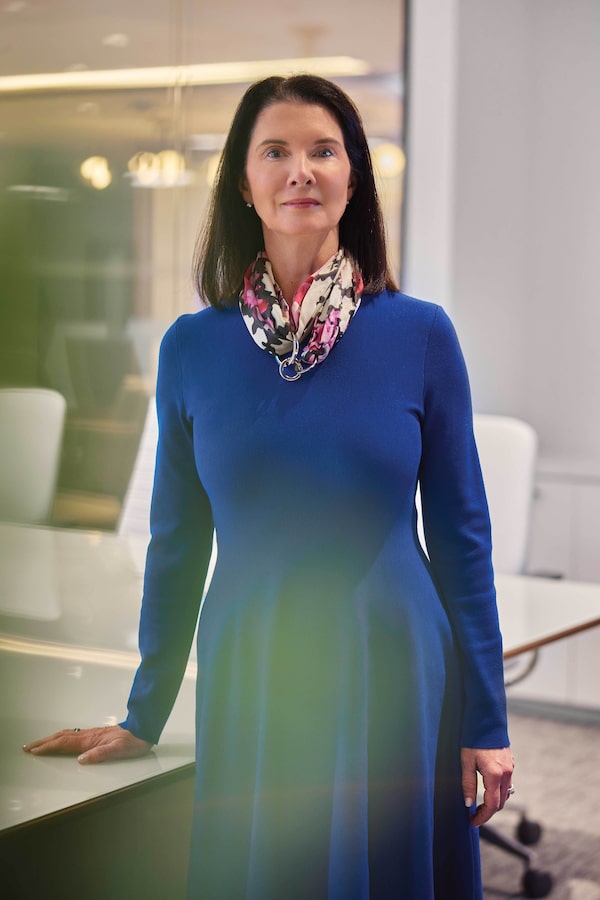
Mona Malone, the chief human resources officer and head of people and culture at BMO Financial Group.Ebti Nabagt/The Globe and Mail
Make it a habit
BMO boosts its women-friendly bona fides by making equity everyone’s responsibility—not just HR’s
»It may seem obvious, but women want to work for organizations that support women. According to 2022 research from McKinsey & Co. and LeanIn.org, women are 1.5 times more likely than men to leave an employer for one with a better record on diversity, equity and inclusion. And that extends beyond a company’s internal work (for instance, its HR perks and policies) and into what it does externally (for example, what it sells and who it serves).
“We take a holistic approach,” says Mona Malone, the chief human resources officer and head of people and culture at BMO Financial Group. “That means eliminating barriers to inclusion in the workplace, yes, but also in the community more broadly.”
Now, BMO deals in money, so prioritizing the economic potential of women as underserved investors, underfunded business owners and underestimated caretakers of household budgets has a clear business imperative. But when the bank allocates $5 billion to fund women-owned companies, or launches national initiatives to help women start businesses and improve financial literacy, it also has the knock-on effect of helping recruit, retain and advance more women, says Malone, who joined the bank in 1996 after reading about then-CEO Tony Comper’s task force on the advancement of women, and whose own career has arced around three maternity leaves, two sabbaticals and a few years working part-time. “If you really believe that you’re trying to make a more inclusive organization, bank and society,” she says, “then tackling those issues is really, really important.”
Embedding this way of thinking into a sprawling organization of some 46,000 employees across three operating groups is a big job—which is exactly why it’s no one person’s job. The bank’s DEI steering committee comprises senior leaders from different areas of the bank, who collaboratively define the strategy and track progress. “It’s HR-supported, but it’s not HR-led,” Malone says. “That’s really important. If you see it as a side initiative—or where just one leader on the team is responsible—you’re not going to have sustained cultural change that’s meaningful. It has to be a shared accountability, across the leadership team.”
QUICK FIX: Apply clear eyes
Every year, BMO conducts a review of the benefits it offers employees using what Malone describes as “lenses of inclusion,” a practice that has resulted in more effective support for such measures as fertility treatments, surrogacy, adoption, and gender-affirmation surgery.

Helena Pagano, the Sun Life’s executive vice-president and chief people and culture officer.Ebti Nabagt/The Globe and Mail
How to...
Set a target that means something
Sun Life expects its leadership ranks to reach gender parity within two years—and it has a meticulously thought-out plan to get there
»It doesn’t take much digging on the Sun Life website to find it: By 2025, the financial giant plans to reach gender parity among all leaders at the vice-president level and above.
It’s a big goal, on a tight timeline, even for a company farther along than most—according to Report on Business magazine’s research, 42% of the people in Sun Life’s top three tiers of leadership are women. “We developed it knowing it would be an ambitious target,” acknowledges Helena Pagano, the company’s executive vice-president and chief people and culture officer.
But don’t let “ambitious” read as “delusional”: The development of Sun Life’s target was as scientific as an actuarial table. Pagano and her colleagues analyzed its normal turnover rate—that is, how many people enter and exit Sun Life in the course of normal business. They reviewed promotion data: who’d moved up, who was due to move up, where there were opportunities to improve. They factored in the growth of the business, as well as the effect of acquisitions. And they layered atop all this number-crunching a crucial screen: Where, in all this, might complacency take hold? “Our goal in setting these targets was to create some change that stretched us beyond the status quo,” says Pagano. “And that’s how we came to parity.”
Once Sun Life set the goal, it chose not to hedge by burying it in the fine print of internal reports. You’ll find the 2025 target in the company’s reporting, on its careers page and, well, in magazine articles like this. A higher profile “embeds accountability,” Pagano explains, while also attracting diverse talent into the mix: “I hear it from candidates, particularly female candidates. They say, ‘It matters to me that I can look and see that I’m represented in the leadership ranks.’ It’s a sign of commitment.”
And for business leaders still skittish about committing to gender targets, Pagano offers a thought exercise: “Would you not set a financial plan?” she asks. “Would you say, ‘We’re all good people, we’re trying hard to make money, let’s not set a financial plan and see how that works out?’”
QUICK FIX: Think like a candidate
Like many organizations, Sun Life encourages diverse-slate hiring—that is, ensuring that candidates from a range of backgrounds are considered for every open job—and it has many measures in place to make sure it happens. But it also considers the candidate experience: “I’m the diverse candidate, coming up against a non-diverse panel, how do I feel about that?” Pagano explains. “You need diversity on both sides.”
Advice from male CEOs

David G. Hutchens, President and CEO of Fortis Inc.elena viltovskaia/The Globe and Mail
On learning...
David G. Hutchens, President and CEO, Fortis Inc.
“When you’re a CEO, you’re basically never an expert, in anything. The job is to set the right tone for the organization’s priorities and to make them clear. And there are things that only the CEO can do, to remove barriers to development opportunities and succession.
We have a diversity, equity and inclusion council, made up of senior-level executives from each of our subsidiaries, to make sure we are focused on this in the right manner across our entire organization. It was developed by Nora Duke, a fantastic woman on our executive team, and I think it has had a great effect on Fortis. When she retired last year, I said, ‘I want to be the executive sponsor.’ I want it to be absolutely clear that this is a priority—to set the tone at the top. But that’s only half the story. The other half is that I want to be in that room, because I can still learn a ton. So for me, it’s about listening to people and their views, and getting experts to come in and have conversations; and then figuring out how to apply what we learn across the organization.
One of the things I get most excited about is the ability to create value and a better workplace at the same time. You don’t get to do that very often.”
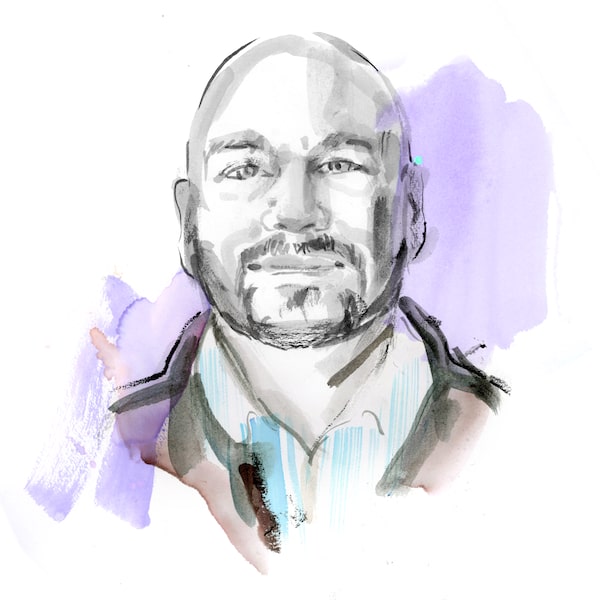
Richard Maltsbarger, President and CEO of Pet Valuelena viltovskaia/The Globe and Mail
On measurement...
Richard Maltsbarger, President and CEO, Pet Valu
“For me, approaching systematic improvement in diversity, equity and inclusion is just part of doing good business. Every month, we conduct a balanced scorecard review of our business. This past year, we explicitly added more metrics around internal promotions, to understand what proportion are going to gender and other forms of diversity, so we can monitor whether the people we’re promoting are actually representative.
We also launched a program for up-and-coming leaders, people with longer-term potential. We select participants through annual talent reviews, from store managers through to the C-suite. In that process, we explicitly introduced a moment where we stop, step back and look at the overall picture of where people are placed within the talent matrix. Does this picture appropriately represent gender and other diversity across our organization? In other words, we pause to ensure our talent review is an inclusive process, and that we’re not introducing any subconscious or other biases into our selections. And if we see an imbalance, we step back and ask ourselves: What could be causing that? Everything else we do is systematic: how we look at financial accounts, forecasting, process improvements, strategic initiatives. Why would diversity, equity and inclusion be any less systematic?”

Mike Crawley, President and CEO of Northland Powerelena viltovskaia/The Globe and Mail
On meritocracy...
Mike Crawley, President and CEO, Northland Power
“My philosophy has always been that hierarchy and titles mean something when you’re moving to execute on an initiative—you need some order and structure to make sure you don’t have chaos. But when you’re trying to problem-solve and come to a decision—which is a lot of the time—I’ve always been very clear that titles and seniority mean nothing. The loudest voice in the room shouldn’t be what dominates. You’re all equals around the table. The best idea should be the one that carries the day. And often, not surprisingly, the best idea doesn’t come from the loudest voice.
I like to bring in, and promote, people who have had to work hard to get to where they are. Those are the people who have the resilience and perseverance to have an impact. Open your mind up to what a leader looks and sounds like. It’s not just the loudest voice at the table, which I generally find is actually pretty shallow confidence. You have to look for people who are accomplished, results-oriented and driven. And I think that really broadens the diversity of leaders you’ll start considering.”

Jean Paul Chauvet, CEO of Lightspeedelena viltovskaia/The Globe and Mail
On targets...
Jean Paul Chauvet, CEO, Lightspeed
“My job is, ultimately, to provide safety; to provide a space for women where they feel they can be themselves, that they’re supported, that they have access to leadership. It’s easy to say, and a lot of people talk about it, but you have to live it.
I’m a strong believer that if you look at numbers, they will magically improve; if you set objectives, you naturally orient the company toward them. We need to treat gender diversity in the same way: If we are serious about it, we have to deal with it by looking at numbers. As an example, we have two open board positions right now. It’s clear to everybody that the people who fill them are going to be women. And so, from the start, from working with the headhunters to reviewing the first resumés to interviewing, it’s clear: We have set an objective, and we’re going to hit the objective.
If you look at successful companies, they have diverse workforces. Of course, there are those who are dragging their feet and those at the forefront, but I think over time there is only one direction this is going. And we do not want to be a laggard.”